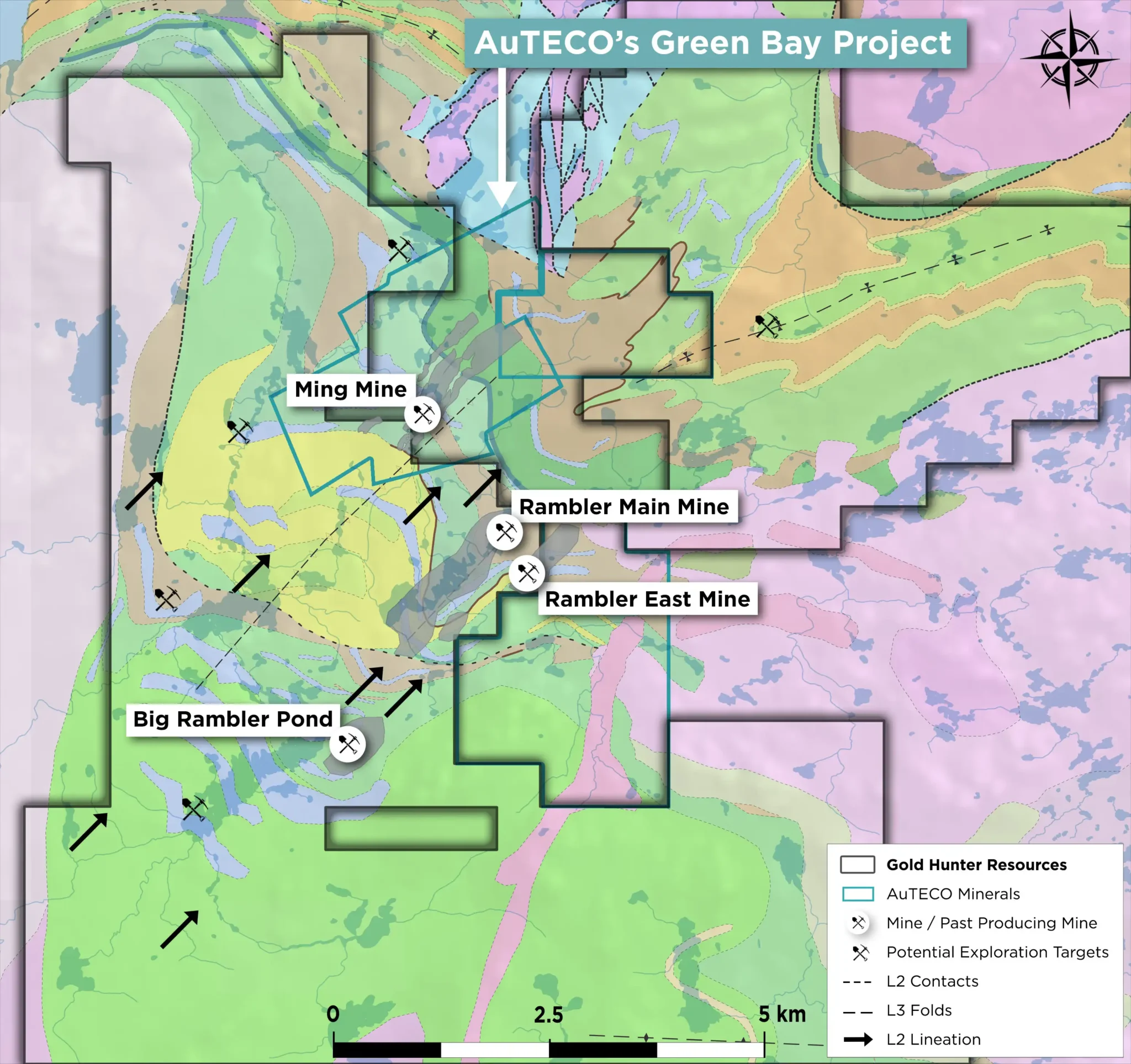RAMBLER-SOLD
Massive Sulphide Mineralization
Newfoundland
RAMBLER PROJECT: OVERVIEW & HIGHLIGHTS
The expansive Rambler Project covers 17,227.97 hectares with year-round road access for streamlined operations. Adjacent to AuTECO’s Ming Mine, it offers geological insights despite Ming Mine’s current receivership. The project hosts production sites, laying the groundwork for exploration, and is conveniently located 40 road kilometers from the Nugget Pond processing facility. Enriched by extensive past work, including 200,000 meters of drilling and 1,200+ surface samples, the site boasts impressive historical results, like 6.9m at 14.37 g/t Gold. This rich history and potential make the Rambler Project a pivotal focus in our portfolio, primed to unlock substantial mineral exploration and production value.
EXPANSION OF RAMBLER SOUTH
UNPRECEDENTED EXPANSION:
Our initial Rambler South Project, spanning 5,085.4 hectares, has undergone a dramatic 239% expansion, now encompassing 17,227.97 hectares. The district is renowned for its mineral wealth, including copper, gold, and zinc.
HISTORICAL & FUTURE POTENTIAL:
This district, with its rich mining history, has been largely untapped with modern exploration and mining techniques, presenting a massive potential for both deep and lateral expansion.
CONSOLIDATION STRATEGY:
Our expansion has resulted in the consolidation of this mineral-rich district, for the first time, under a single operator -Gold Hunter Resources.
VALUE ADDITION:
This strategic move not only expands our exploration portfolio but also fortifies our involvement in the Baie Verte Peninsula, the heart of mining in Newfoundland.
CONTACT ZONE FOCUS:
Our primary Rambler Project target is the contact zone between sheeted dykes and pillow lavas, holding promising mineral potential.
MAFIC ORE SYSTEM:
Rambler’s ore system is mainly mafic-hosted, distinct from its Paquet Harbour Group volcanic surroundings.
HINGE ZONE ADVANTAGE:
Mining areas within Rambler are strategically situated along synform and antiform hinge zones, offering favorable conditions for deposits.
EXPLORATION POTENTIAL:
Several similar conceptual targets in the district present significant potential for future discoveries, sharing favorable structural settings.
LINEATION INFLUENCE:
The L2 lineation geometry greatly affects orebody shape at Rambler and Ming Mines, providing insights for targeted exploration and potential resource expansion.
RAMBLER EXPLORATION UPSIDE
- KEY DATASETS
LINEATION GEOLOGY:
The L2 lineation geometry exerts significant control on the northeast-plunging, cigar-shaped orebody geometry at the Rambler and Ming Mines.
CONTACT ZONE TARGET:
The primary target within our Rambler Project is the contact zone between the underlying sheeted dykes and the overlying pillow lavas.
MAFIC HOSTED ORE SYSTEM:
The ore system at Rambler is predominantly mafic hosted and only partially associated with the Paquet Harbour Group volcanics in which it is situated.
HINGE ZONES:
The known mining areas in the Rambler district are located along the synform and antiform hinge zones, which offers a structurally favorable setting for mineral deposits.
EXPLORATON TARGETS:
Numerous similar conceptual exploration targets have been identified within the Rambler district that share similar structural settings.




